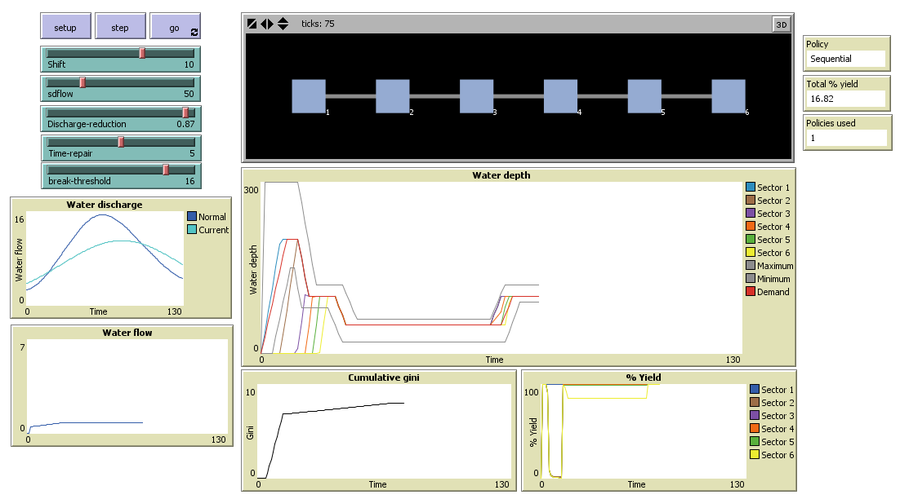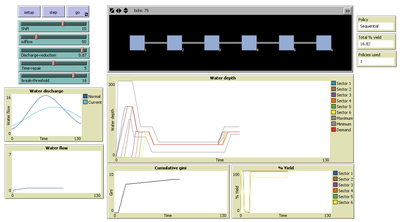AdaptPumpa 1.0.0
This model represents the Pumpa irrigation system, a small-scale irrigation system located in Central Nepal. The purpose of the model is to analyze the robustness of the system to climate change. The scenarios of impacts of climate change are simulated: i) changes in the water supply (i.e. increase or decrease in rainfall), ii) variation in river discharge distribution (i.e. reduction and expansion of the monsoon season), and iii) temporal shifts in river discharge.

